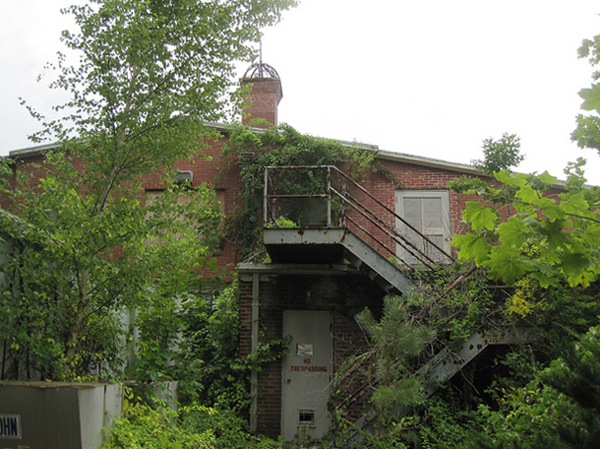Q&A: Jane Alcorn, President of the Tesla Science Center


It's not easy to rewrite history -- especially when squaring off against Thomas Edison. Matthew Inman, author of The Oatmeal, is trying to do just that with an infographic that is spreading like Instagram across the geek world.
"Why Nikola Tesla was the greatest geek who ever lived," explores the differences between Tesla and Edison, inventors working at the turn of the century. Edison remains a household name, even 81 years after his death. Tesla, arguably a more prolific and ingenious innovator, has for the most part slipped beneath the public consciousness.
Inman, however, is not the only trying to revive Tesla's reputation. His infographic effort is part of a broader fundraising campaign by the Tesla Science Center at Wardenclyffe, New York-based nonprofit, to build a science center at Tesla's former laboratory in Shoreham, New York. Just days old, their IndieGoGo effort has already raised $496,300 of its $850,000 goal: a fact that is giving new meaning to the phrase "revenge of the nerds."
To get a better grasp of the campaign to save Wardenclyffe and Tesla's contribution to science and engineering, SmartPlanet reached out to Jane Alcorn, President of the Tesla Science Center.
SmartPlanet: Outside of the technology community most people probably know Tesla as the name of Elon Musk's roadster. What was Nicola Tesla contribution to science and engineering?
Jane Alcorn: Nikola Tesla had an enormous impact on the 21st Century. Named the "Father of Radio" by the U.S. Supreme Court, he developed a transmitter and receiver in his teleautomaton, a vehicle that incorporated the foundations of radio transmission, the first robotics, and the first remote control! It also included the logic gate, so important to computers today. He developed the alternating current system of electrical transmission we use throughout the world today, and with the backing of Westinghouse, electrified Niagara Falls. People in the worlds of engineering and science know his name well. He is one of only a handful of scientists to have a unit of scientific measurement named after him, like the volt is named for Volta. The "Tesla" is a measurement used in magnetic resonant imaging. By the way, Elon Musk has made a promise to help us out, too!
SP: Do we see evidence of Tesla's work in engineering and science projects or companies of today?
Alcorn: Absolutely. Scientists and engineers are still discovering and investigating Tesla's work. For example, Tesla wanted to be able to transmit energy without wires, and there is a team of scientists at MIT, who, inspired by that, have created a way to charge electronic equipment without using wires.
SP: Your organization hopes to buy Tesla's Wardenclyffe property. What is the significance of Wardenclyffe?
Alcorn: Wardenclyffe is the only remaining laboratory where Tesla worked. It was to have been his crowning achievement, where he was building his huge transmitting tower. He intended to transmit messages, pictures, and energy from this site. Keep in mind that this was over 100 years ago! This all ended when he lost his funding. The laboratory has not only scientific and historical significance because of Tesla, but also architectural interest, since it was designed by famed architect Stanford White, and was among the last of his designs.
SP: What roadblocks have you encountered in your pursuit of saving Wardenclyffe?
Alcorn: The biggest roadblock has been the financial one. There are restrictions and regulations that have to be met once we begin to develop the museum and science center, regarding zoning regulations, health department regulations, etc., and there will be environmental concerns to keep in mind. Most of these can be overcome, but first we have to have the money to acquire the property and plan properly for its future.
SP: Recently we've seen a resurgence of interest in turn-of-the-century, from the New Museum's current exhibit "Ghosts in the Machine" to upcoming films Les Misérables and Anna Karenina. What do you think it is about the present moment that is attracting audiences to these stories?
Alcorn: I really don't know the answer to that, but I imagine it may be because we are very caught up in a fast-moving world, and there is a feeling that things were slower and more romance in the past. However, there may also be an interest in this because people see some parallels to the way things are today, and instinctively want to learn from the past.
SP: Artist Matthew Inman recently went up advocating support for your organization went up a few days ago. What has been the response?
Alcorn: Matthew Inman (The Oatmeal) has looked on Tesla as one of his heroes. He has graciously put his attention to helping us by sharing our cause and the urgency of it with his enormous fan base. Matthew has promoted this effort, and guided us through the steps to get this IndieGoGo.com project launched. The people at IndieGoGo have been fantastic, too. As a result of this collaboration between them, with our organization as the beneficiary, the goal of saving Wardenclyffe is much more attainable. The response of the people who have heard about it has been very gratifying and absolutely amazing. Thanks, Matthew, Slava, IndiGoGo, Amanda, and all of the contributors.
This post was originally published on Smartplanet.com